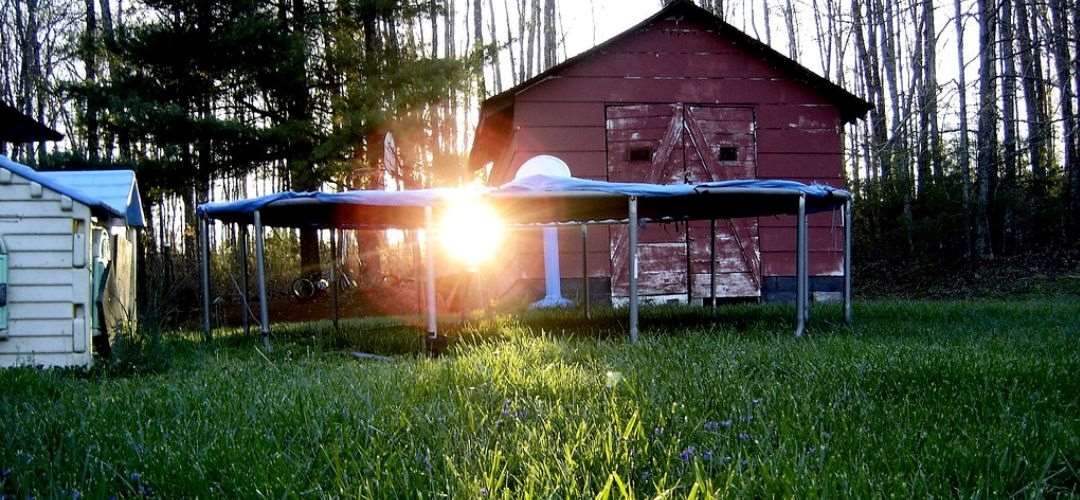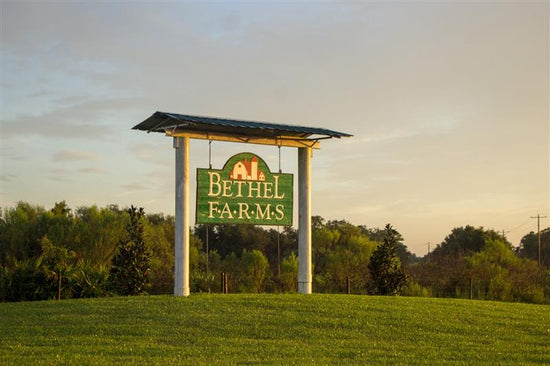
Dead Grass Under the Trampoline? Fix It Fast With These Tips
Jamie TedderWith more information now available on trampoline safety, it’s only fitting we start paying just as much attention to what’s underneath the trampoline—like your lawn. Backyards today aren't just for show; they’re multi-functional spaces for play, relaxation, and curb appeal.
A trampoline may bring endless joy to your kids, but it can leave your lawn looking patchy and worn. The good news? You don’t have to settle for dead grass underneath. With the proper foundation—like premium sod from Bethel Farms—and proper maintenance, you can keep your backyard safe and green.
Why Natural Grass Is the Best Surface for Play
There are no official rules about where a trampoline must be placed, but in terms of safety and comfort, natural grass is hard to beat. Here’s why:
Grass stays cool. Unlike artificial turf, which can heat up to over 170°F in full sun, real grass keeps the ground cooler for bare feet and playtime.
Softer landings. Natural grass provides a cushion. It absorbs impact more effectively than synthetic surfaces like turf, dirt, or concrete—reducing the risk of injuries.
Protects trampoline parts. Bouncing on hard surfaces can damage trampoline legs and supports. Grass softens the impact, extending the lifespan of the frame and poles.
Good for the environment. Healthy grass improves air quality, supports biodiversity, and promotes soil health through its deep roots.
And if you're wondering whether injuries are common—yes, they are. According to the U.S. Consumer Product Safety Commission, more than 300,000 trampoline-related injuries required medical attention in 2018 alone. Over 110,000 of those resulted in emergency room visits. What’s more, trampoline-related fractures have increased steadily—rising nearly 4% per person-year over the past decade.
Why Trampolines Challenge Your Lawn
Unfortunately, trampolines and lush lawns don’t always get along. Here’s what’s working against your grass underneath:
Shade reduces photosynthesis. With less sunlight, grass struggles to grow, and established grass can thin out.
Trampoline legs compact the soil. Over time, the constant weight of the trampoline presses down on the same spots, squeezing soil particles tightly together. This restricts airflow and limits the grass roots from growing deeper.
Air and water can’t circulate. Because the trampoline mat acts like a canopy, it blocks rainfall and traps humid, still air beneath it. Without proper circulation, moisture can't evaporate easily, which can lead to mold growth or soil that stays soggy.
High foot traffic. Constant jumping or climbing in and out of the trampoline leads to worn-down patches.

Bethel Farms Sod: The Best Starting Point for Growing Grass Under Trampoline
When you’re serious about backyard play, start strong with high-quality sod grass for sale from Bethel Farms. For shaded areas under trampolines, we recommend St. Augustine grass types—especially varieties like:
CitraBlue: This variety is characterized by its excellent shade tolerance and a unique, dark blue-green color. Its dense growth habit helps crowd out weeds, making it a low-maintenance option for high-traffic backyard areas. While it can handle some shade better than other varieties, prolonged coverage—such as from a trampoline—can weaken the grass. Be sure to move the trampoline regularly to allow sunlight to reach the lawn.
Palmetto: A resilient St. Augustine variety that performs well in areas with moderate shade, Palmetto is ideal for use under or around trampolines as long as sunlight exposure is rotated. Palmetto maintains good year-round color and bounces back quickly from foot traffic or pet wear, but periodically moving heavy objects is essential to avoid long-term damage.
Why Sod Works
-
Delivers instant coverage.
-
Suppresses weeds while it establishes.
-
Controls erosion.
-
Ideal for significant repairs where the lawn has been heavily worn or completely bare.
Spot Repairs or Small Shaded Areas? Use Grass Plugs
Not ready for full sod replacement? Grass plugs, like SodPods®, are the next best thing—especially for smaller, hard-to-reach spaces under or near the trampoline.
Why Grass Repair Pods are Effective:
-
They’re pre-grown with established roots, so they take off faster than seed.
-
Great for post-trampoline recovery.
-
Work well in shady spots or areas with limited access.
-
Affordable and easy to plant—simply dig a hole with a grass plug planting tool and insert the plug.
Maintenance Tips for Trampoline-Friendly Lawns
Choosing the right sod is the first step, but consistent care is key to helping your lawn withstand the stress of a trampoline.
Rotate the trampoline. Shift its location every few weeks to give the grass underneath a break and allow more light to reach those areas.
Trim back trees. This allows sunlight to filter through, helping your lawn stay healthy even in partially shaded conditions.
Aerate and top-dress. If the soil under the trampoline feels hard, it’s probably compacted. Aerate and add a thin layer of enriched topsoil to revive it. Here's a homeowner's guide to aerating a lawn.
Water regularly. Lawn areas that are partially shaded still need hydration—just less than areas in direct sun. Watch for signs like wilting blades or a dull, bluish-green tint to know when it’s time to water.
Mow slightly higher. This helps the roots grow deeper and the blades grow tall, aiding in recovery and making your lawn more resilient to wear and stress.
Fertilize smart. Lawns benefit from a balanced fertilizer, especially during the active growing season. A slow-release option like NutriPod® is specifically made for grass plugs, accelerating growth to help rebuild your lawn over time.

Trampoline Safety and Lawn Health Go Hand-in-Hand
A lush, well-maintained lawn does more than look good—it improves trampoline safety.
Softens falls. Whether kids are jumping high or climbing on and off, a well-maintained lawn provides a natural cushion. Unlike bare soil or hard surfaces, sod helps absorb impact, reducing the chances of scrapes and bruises.
Keeps equipment stable. No one wants a wobbly trampoline. A strong base of deeper roots keeps the frame balanced and helps prevent the legs from sinking unevenly into the soil.
Complements safety features. Pair your healthy lawn with netting, edge padding, and a one-jumper-at-a-time rule to minimize risks. A well-maintained lawn fills in gaps and levels out the ground, reducing trip hazards around the trampoline.
Frequently Asked Questions (FAQs)
1. Is it worth trying to grow grass under a trampoline?
Definitely. With the right grass variety and consistent maintenance, your lawn can stay healthy and green—even in the shaded areas beneath a trampoline.
2. Do I really need to rotate the trampoline?
Yes. It helps avoid over-compaction and gives the grass underneath a chance to recover and get more light.
3. What about fake grass—can I just use that?
Synthetic turf may seem easy, but it overheats, doesn’t support local ecosystems, and offers less protection in a fall. Real grass is safer and better for your yard.
Final Thoughts
Your backyard should be a safe, welcoming space—for your family, your trampoline, and your lawn. With Bethel Farms sod as your foundation and SodPods® grass plugs for small fixes, even the trickiest areas, like under a trampoline, can be green, soft, and thriving.
Ready to restore your lawn? Visit the Bethel Farms website to explore premium sod grass solutions, expert tips, and everything you need to bring your backyard back to life.

